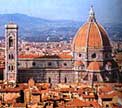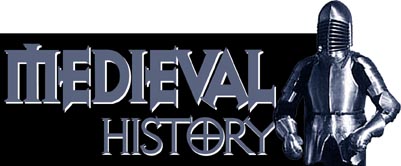
|


|
|
|
Mr. Sedivy's
More Features:
|
Highlands Ranch High School - Mr. Sedivy -
The Middle Ages - Role of the Roman Catholic Church During the fragmented times, the only universal institution was the Church. The Bible was at the center of any learning activity. Terms used by the Roman Catholic Church:
Role of the Church in Government The Crusades The Byzantine emperor in Constantinople asked the Pope to help him drive the Turks from the Holy Land. Peter the Hermit and the Pope started the first Crusade. Cleverly, Pope Urban II said that he would forgive the sins of all people who went and fought in the Holy Land.
Christians killed thousands of Hungarians - then, for the heck of it, Germans - then Greeks. Christians also killed Jews. (This is the Crusade that was supposed to be a success.) The armies of the first Crusade were successful and took Jerusalem from the Muslims in 1099. The Crusaders set up Christian kingdoms along the coast of Palestine and Syria, and built strong fortresses to defend their new lands.
There were seven more Crusades after the first one. Many of them failed because the Crusaders quarreled with each other. The Muslims took back much of the Holy Land. When the Muslims took Jerusalem in 1187, the third Crusade set off from Europe. Richard Lion Heart massacred 3,000 innocent Muslim villagers. When they got to the Holy Land, the Crusaders were defeated by the Muslim general, Saladin.
During the 4th Crusade, the Christians sacked Constantinople, but during the 5th Crusade, the Crusaders got caught in the flooding Nile and had to go home. The Children's Crusade took place between the 4th and 5th Crusades. More than 30,000 French and 20,000 German children were sent to the Crusades. French kids got to Alexandria and were sold into slavery. The German kids got across the Alps, got homesick and deserted. Many died. Later, the Crusaders forgot that they were fighting for their religion. Knights had good reason to go. Going was a good career move. Hop on a horse, kill a few hundred people, and come home a hero. Times were different. If you died, so what? Also, they got paid, and most knights were broke. In medieval times, the eldest son inherited the family's wealth, and this left the younger sons in the poorhouse.
Many of them went to Palestine hoping to take the land and become rich. the Christians got tired of it and went home, and the Holy Lands reverted back to Muslim control The Crusaders stole their food from local farmers, ran around in mobs, and brought thousands of mistresses and prostitutes with them. By 1291, the Muslims had taken the last remaining Christian city at Acre.
During the Crusades, European people learned more about the eastern parts of the world. When they returned to Europe, they took back with them many new things including foods, spices, silk, and paper. They learned about medicine, mathematics, and astronomy from the Arabs, and trade between east and west began to grow. The Inquisition People suspected of heresy had one month to confess; those accused came before the Inquisition until they confessed. They were punished by being whipped or sent to prison, but were welcomed back into the Church.
Need for Reform
Gregory VII vs. King Henry IV 1. Early Middle Ages: Dark Ages and Feudalism 2. Clovis, Charles the Hammer,
Charlemagne, 3. The Roman Catholic Church in the Middle Ages 4. High Middle Ages / National Monarchies 6. Knights, Heraldry, and Medieval Warfare 8th-
to 15th-Century Poems
and Prose More
Information Mr.
Sedivy's Tour of Medieval Rothenburg Medieval Penalties
of Shame and Honor - Historical Periods of | Prehistory
| Mesopotamia & Phoenicians |
|
Highlands Ranch High School ![]() 9375 South Cresthill Lane
9375 South Cresthill Lane ![]() Highlands Ranch, Colorado 80126
Highlands Ranch, Colorado 80126 ![]() 303-471-7000
303-471-7000
Mr. Sedivy's History Classes
| Colorado History | American
Government | Modern European History | Advanced
Placement European History | Rise of England
| World History |
| Home | Back to Top of Page |
Site Contents |









